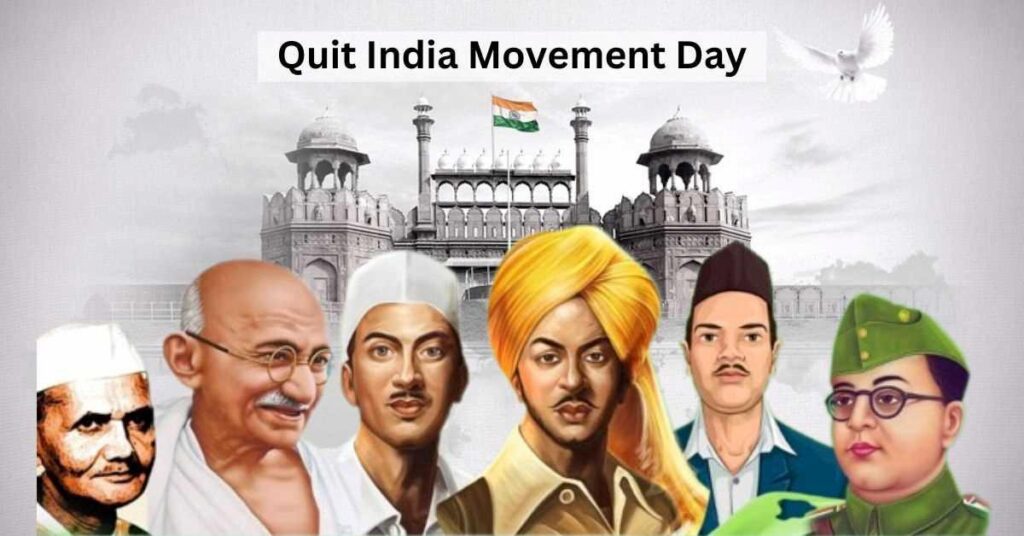Quit India Movement
The Quit India Movement, otherwise called the August Movement, was a development sent off at the Bombay meeting of the All India Congress Committee by Mahatma Gandhi on the eighth of August 1942, during World War II, requesting to finish British rule in India.


Credits: Jagran Josh
INDIVIDUAL SATYAGRAHA
In August 1940 Viceroy Linlithgow made a give as a trade-off for Congress’s support for the conflict exertion. The proposition of control status in an unknown future was not adequate to the congress. Nonetheless, it would have rather not hampered the British during its battle against the extremist powers of Germany and Italy.
Gandhi proclaimed restricted satyagraha which would be presented by a couple of people. The target was to pass on to the world that however India was against Nazism, it didn’t enter the conflict deliberately. Vinobha Bhave was quick to offer satyagraha on 17 October 1940. The Satyagraha went on till the year’s end. During this period over 25000 individuals were captured.
CRIPPS MISSION
On 22 March 1942, the British government sent a mission under Cabinet Minister Sir Strafford Cripps as the Japanese thumped on the entryways of India. The discussions between the Cripps Mission and the Congress flopped as Britain was not able to quickly move compelling power. The Cripps Mission advertised:
• Award of Dominion status after the conflict.
• Indian Princes could consent to a different arrangement with the British suggesting the acknowledgment of the interest of Pakistan.
• English control of guard during the conflict.
”DO or DIE” CALL BY GANDHI
The result of the Cripps Mission caused impressive disillusionment. The All India Congress Committee that met in Bombay on 8 August 1942 passed the well-known Quit India Resolution requesting a prompt finish to British rule in India.
Gandhi gave a call to DO OR DIE. Gandhi said, ‘We will either free India or bite the dust in the endeavor; we will not live to see the propagation of our subjugation”. A peaceful mass battle under Gandhi was to be sent off. Yet, ahead of schedule following day Gandhi and the whole Congress administration were captured.
JOB OF SOCIALISTS
With Gandhi and other unmistakable heads of the congress in prison, the Socialist gave the authority to the development. Jayaprakash Narayan and Ramanand Misra got away from the jail and coordinated an underground development. Ladies activists like Aruna Asaf Ali assumed a gallant part. English utilized all its strength to stifle the revolt.
Thousand were killed with assault rifles and at times planes were utilized to toss bombs. Aggregate fines were forced and gathered with the most extreme thoroughness. Gandhi started a multi-day quick in February 1943 which almost compromised his life. At long last. the British government yielded. Gandhi was set free from Jail in 1944.
SUBASH CHANDRA BOSE
Subash Chandra Bose who had left the Congress was currently under home capture. In March 1941, he made a sensational departure from his home in camouflage and arrived in Afghanistan. At first, he needed to get the help of the soviet association, and with that assistance, he went to Germany.
Next, he went to Japan and assumed command over the Indian National Army. Bose coordinated the three units: Gandhi Brigade, Nehru Brigade, and ladies’ detachment. Bose framed the temporary Government of Free India in Singapore. He gave a trademark ”Dilli Chalo”. INA was sent as a feature of the Japanese powers. In any case, the loss of Japan halted the development of INA. The plane conveying Subash Chandra Bose crashed finishing his quit India campaign for opportunity.
CONCLUSION
The Quit India Campaign was really squashed. The British wouldn’t concede prompt freedom, saying it could happen solely after the conflict had finished. Viciousness occurred around the nation and the British captured a large number of pioneers, keeping them imprisoned until 1945.
Credits: Briefly
